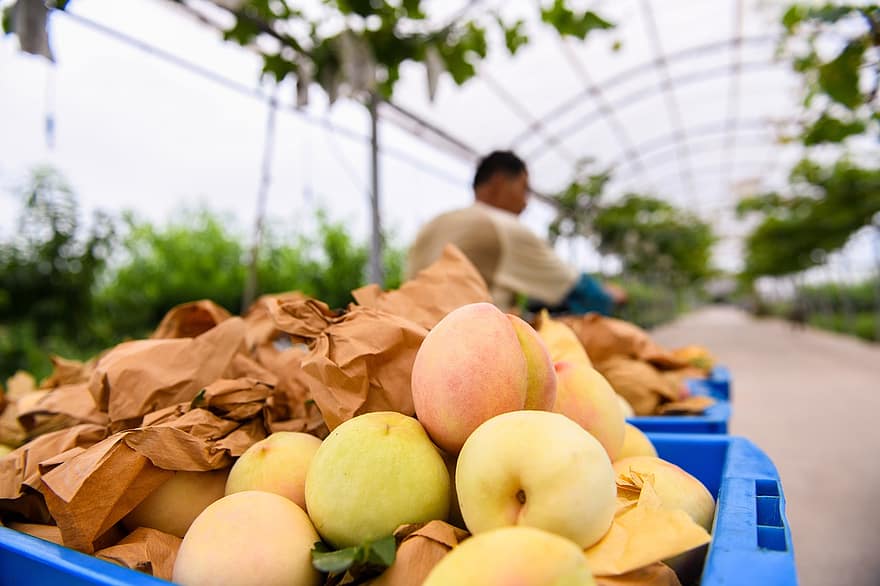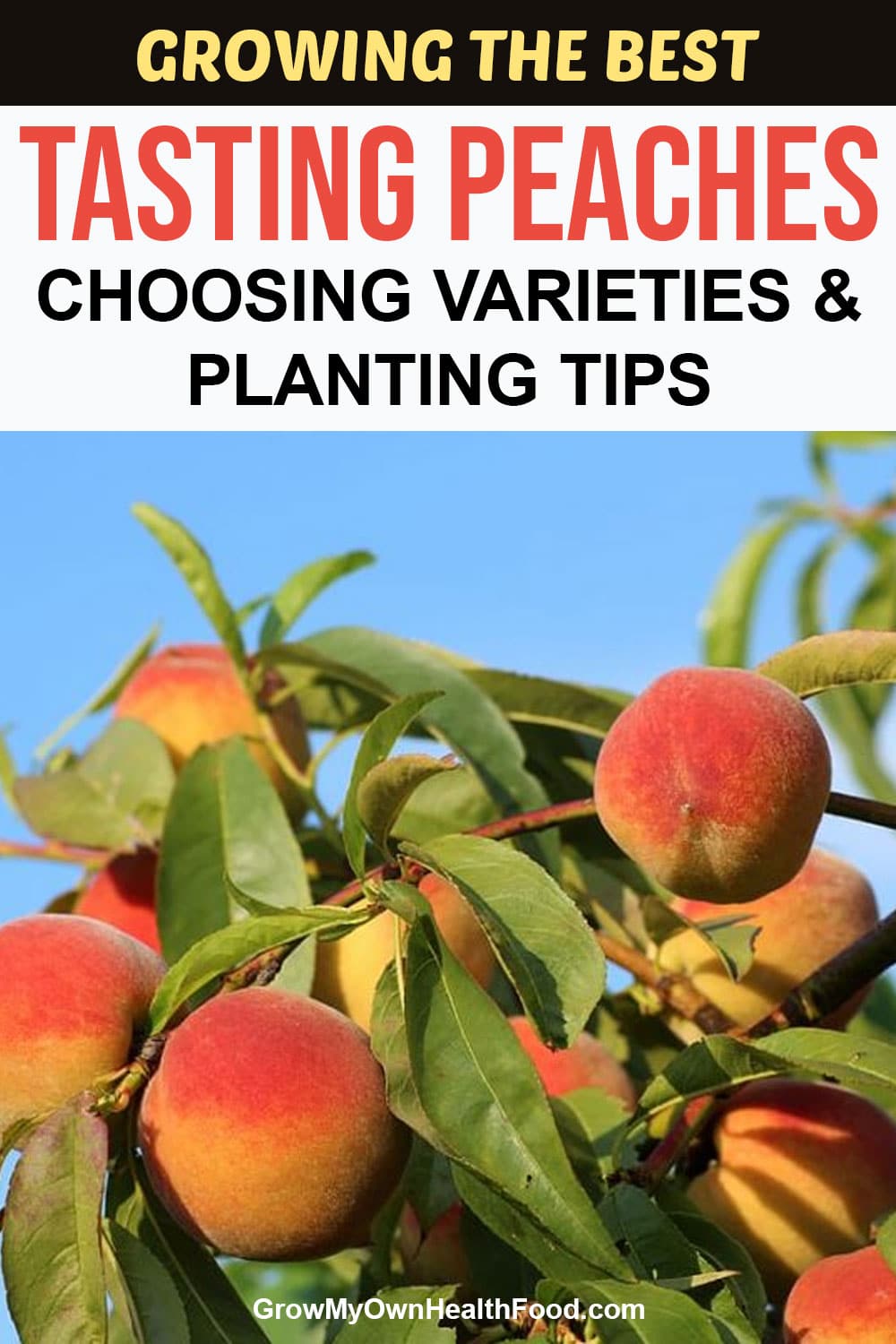Anybody can grow their own peaches, as far as they understand a few simple steps to follow. You may not know it, but homegrown peaches tend to have a ‘special’ taste to them. Almost making it look like growing peaches in your backyard are somewhat different from the ones you get from stores.
Imagine the Best Tasting Peaches
You’re walking under the shade of a peach tree, taking in the scent of its ‘rich’ fruit. Then there is a dull thud not far from where you’re standing. You look towards the rustle of dry grass, and there lies one of the most ripened peaches you’ve ever seen; rich, sweet and smelled heavenly.
You bend down and pick it up, a satisfactory smile circling your lips. Eating a perfectly ripe homegrown peach is an experience anyone should strive to have. The juiciness, just like the flavor is really something to behold.
Harvesting Peaches
However, to get the most from homegrown peaches and nectarines, you’ll have to harvest them at their peak. You can tell if they’re approaching their peak from their scent. At their peak, you can perceive them from many yards away, and even the nectarines will deepen in color as they near picking time.

Since you can’t be sitting under the peach tree waiting for the fruits to fall, you can look out for their scent. Once they draw you closer, then it’s time to harvest them. Hold each fruit gently in your hand and twist a little bit. It should fall off easily into your hand if it’s ready. No squeezing of the fruit, as any pressure will damage it and accelerate decay.
Growing peaches is well worth the effort because you’ll get the real taste of their flavor, as most of them on supermarket shelves have lost their taste, become too dry and fibrous. In addition, it provides you with a beautiful landscape through their foliage, perfume and blossom.
However, peaches and nectarines do not grow heavily every year. But whatever the quantity, it justifies their space in the garden. Good thing is, both are self-fertile and so one tree will definitely give you fruit.
Varieties of Peaches
Coming to varieties, there are lots available. But the Rochester & Peregrine peach and Lord Napier & Pineapple nectarines are the favorites to many due to their flavor.
Since they usually ripen in July or early August outside, you can grow them in a greenhouse or a polytunnel. This will help protect the flowers from late frosts. You can even grow them against a sunny wall.
- ✅LARGE WALK-IN GREENHOUSE: An ideal way to extend your growing season while easily managing your plants and protecting them from extreme temperatures. Two installation methods: Set it on a hard surface or anchor it into soft soil.
- ✅HEAVY DUTY STEEL FRAME: Solid steel construction with a galvanized finish, which is resistant to rust, chipping, and peeling. Also equipped with 4 slant bracing tubes, a front cross bar, and middle reinforced tubes for enhanced stability.
- ✅TRANSPARENT PLASTIC COVER: The tough, durable and transparent PE plastic cover protects plants while allowing nourishing sunlight to pass through. The cover can be easily attached to the frame with the included tethers and single-sided tape.
- ✅8 ROLL-UP SIDE WINDOWS: The eight roll-up windows have mesh netting to allow for cross ventilation and climate control.
- ✅ROLL-UP FRONT ENTRANCE: A large zipped roll up door provides easy access to the inside and can be attached to the top in order to stay open. You can easily anchor the greenhouse into the soil and add stability with the 4 screw ground stakes, 4 supporting rods, and an overhanging cover. NOTE: In order to prolong the service life, you need to strengthen it yourself before bad weather (windy, rainy, snowy, haily etc.)
Prices pulled from the Amazon Product Advertising API on:
Product prices and availability are accurate as of the date/time indicated and are subject to change. Any price and availability information displayed on [relevant Amazon Site(s), as applicable] at the time of purchase will apply to the purchase of this product.
Beware of leaf curl, a fungal disease that can be caused by spring rains. This can weaken the tree and make the leaves blister, causing dropping of developing fruit. The disease can be a real pain, so it’s best to avid it entirely. You can do this by using a temporary cover (e.g. transparent plastic sheet) to keep the rain off.
Steps to Growing Peaches
1. Plant them in the sunniest, well-drained spots.
2. Feed them biweekly with high-potassium liquid feed – starting from flowering to harvest.
- Simply Silica is a liquid fertilizer formulated with potassium Silicate that promotes the growth of strong plant tissues.
- The 8oz concentrate of Simply Silica makes 47 gallons of ready to use product.
- Use Simply Silica as a soil drench or foliar spray once a week from start of vegetive growth throughout flowering and fruiting. Simply Silica is designed to supplement your existent nutrient program, not replace it. It is safe for resevoirs. It will not clog drippers.
- Simply Silica improves a plants natural resistance to environmental stresses, including heat and drought.
- Silica is a mineral supplied to plants as a nutrient that provides rigidity and structural endurance for crops. Silica increases root growth, boosts yield, and enhances crop quali
Prices pulled from the Amazon Product Advertising API on:
Product prices and availability are accurate as of the date/time indicated and are subject to change. Any price and availability information displayed on [relevant Amazon Site(s), as applicable] at the time of purchase will apply to the purchase of this product.
3. Thin the fruit when they’re still small, ensuring each fruit is 4inch apart from the next one. It may be painful, but it’s necessary to give the fruits more light and air to develop.
4. Prune out crossing branches and older wood immediately after picking. This will allow newer growths to take over and develop without any problem.
- Drop forged body and handles.
- Quality blade made of Premium Titanium steel with Ultra-fine Polishing Technology.
- Ergonomically designed non-slip handles are strong,lightweight,and comfortable.
- Sap groove design to help keep pruning shears from sticking by channeling off sap.
- Pruners can cut up to 3/4 diameter size tree branches.This may vary depending on tree speci
Prices pulled from the Amazon Product Advertising API on:
Product prices and availability are accurate as of the date/time indicated and are subject to change. Any price and availability information displayed on [relevant Amazon Site(s), as applicable] at the time of purchase will apply to the purchase of this product.
5. To encourage new shoots formation, you’ll need to prune to a growth bud. You can easily differentiate this from the plump fruit buds, because they are more pointed.

6. Since making use of cover can make pollination by insects a little bit difficult, you may want to dust pollen from flower to flow with the aid of a brush. Though negligible, it makes a whole lot of difference to a fruit set.
- ✅ PACKAGE INCLUDES - 1 Harvest More static brush with nylon bristles and wooden handle.
- ✅ TRIM BIN CLEANING BRUSH - Sweeps up remaining pollen kief keef neatly and easily clears of debris from your Trim Bin screens and filters.
- ✅ LIGHTWEIGHT AND DURABLE CLEANING TOOL - Harvest More brush is made of ultra lightweight and durable materials that makes cleaning fast and easy. Can be used repeatedly and wont scratch your Trim Bin sieves and sifters
- ✅ MADE WITH QUALITY - This pollen cleaning brush tool by Harvest More is made with quality materials and ingenuity, like all products in the Harvest More line.
- ✅ EXCEPTIONAL CUSTOMER CARE - We cant wait to add you to our long list of growers, trimmers and herbal connoisseurs increasing their yields and getting the most out of every harvest with the Trim Bin! We offer 1 Year Limited Manufacturers Warranty against manufacturing defec
Prices pulled from the Amazon Product Advertising API on:
Product prices and availability are accurate as of the date/time indicated and are subject to change. Any price and availability information displayed on [relevant Amazon Site(s), as applicable] at the time of purchase will apply to the purchase of this product.
Finally, if you’re able to avoid leaf curl and frost damage, then you should be on your way to having a juicy-filled summer. Check out our article on the best tools for preparing summer fruits.
Good Luck!







